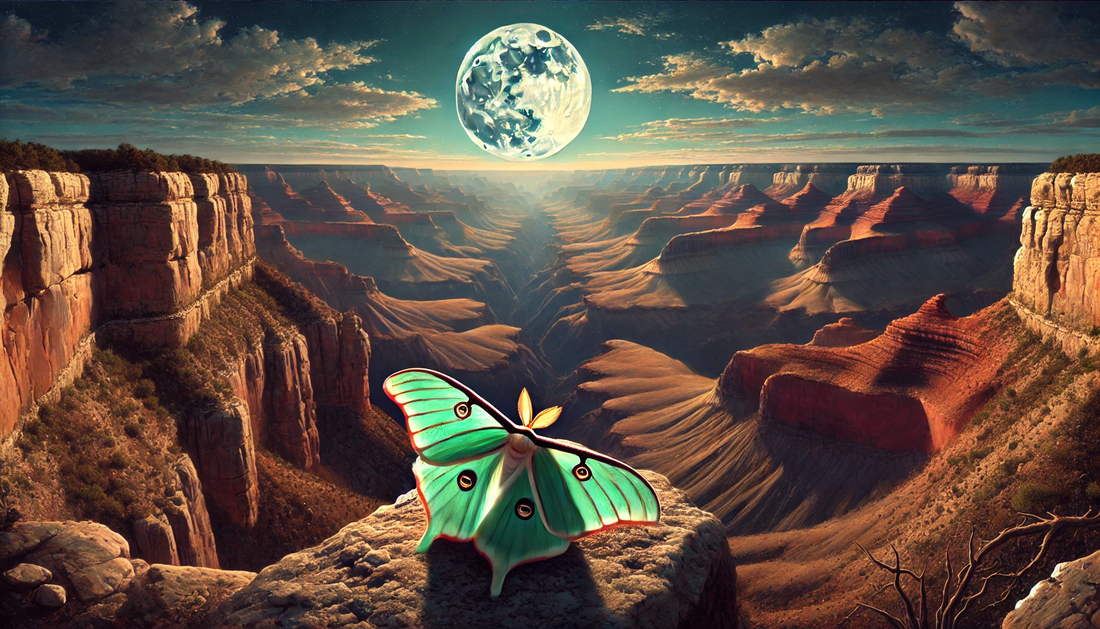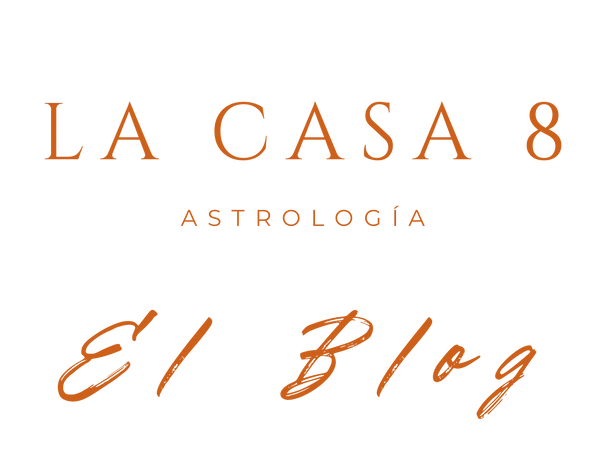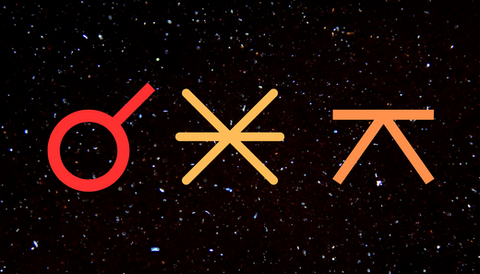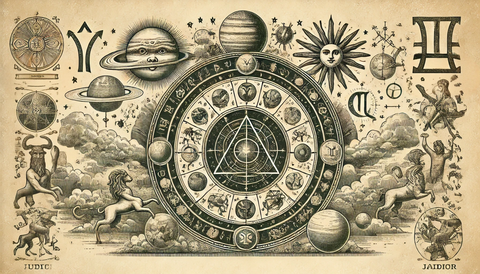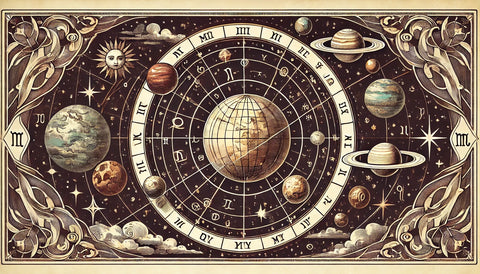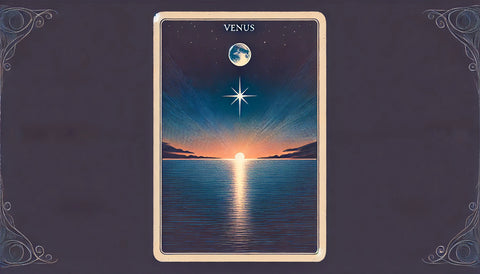The Lunistice is a very special transit, and we will experience it this 2025. As we can guess from its name, the lunistice is an astronomical phenomenon comparable to the solstice, but starring the Moon. While the solstices occur annually marking the highest or lowest points of the Sun in the sky, the lunistices take place every 18.6 years , when the Moon reaches its maximum declination, either its highest or lowest point in the sky, depending on the hemisphere where we are (don't you know what declination is? The...
The Lunistice is a very special transit, and we will experience it this 2025. As we can guess from its name, the lunistice is an astronomical phenomenon comparable to the solstice, but starring the Moon. While the solstices occur annually marking the highest or lowest points of the Sun in the sky, the lunistices take place every 18.6 years , when the Moon reaches its maximum declination, either its highest or lowest point in the sky, depending on the hemisphere where we are (don't you know what declination is? The explanation in this post ).
In January 2025, the Moon will reach its maximum southern and northern declination , making it an exceptional phenomenon from both an astronomical and astrological point of view . Astronomically, this lunistice is notable for its rarity and for the peculiar observations it will allow. If you are in the northern hemisphere, you will see the Moon extremely low , almost touching the horizon when it transits Sagittarius and Capricorn, while in the southern hemisphere the Moon will rise very high in the sky , reaching a rather imposing position. And vice versa, when the Moon transits Gemini and Cancer, in the north it will be very high and in the south, just touching the horizon.
Astrologically, the lunistice marks a change of direction , a moment that - like the solstice - acts as a portal to a new stage. It is a turning point that, together with the other astrological transits of 2025, tells us that the world will never be the same again.
Please note: the next lunistice will occur in September 2043.
And For How Long Does the Moon “Stop” in the Sky?
The idea that the Moon “stands still” during the lunistice is only apparent. In reality, the Moon never comes to a complete stop, but what happens is that, upon reaching its maximum declination (28°72' north or south), its motion appears to slow down and remain stable for a few days. During this brief period, the change in the Moon's height in the sky night after night is almost imperceptible, creating the illusion of a pause or stillness before it begins to recede toward lower values of declination.
The Dates of the Lunistice:
The increase in the Moon's declination towards its extremes has been gradual since 2024, but peaks on the following dates in January and February 2025 :
• January 12 and 13 : Northern Lunistice in Gemini and Cancer
• January 26 and 27 : Southern Lunistice in Sagittarius and Capricorn
• February 8 and 9 : Northern Lunistice in Gemini and Cancer
• February 22 and 23 : Southern Lunistice in Sagittarius and Capricorn
During these days, the Moon will transit through the signs associated with the solstices : Gemini and Cancer for the summer solstice (northern hemisphere) and Sagittarius and Capricorn for the winter solstice. This is no coincidence, as these signs mark the extremes where the Sun can reach its maximum declination. In the same way, the Moon reaches its extreme declinations only when it transits near the zodiacal degrees of 0° of Cancer and 0° of Capricorn .
When the Moon is in Gemini and Cancer (Northern Lunistice), it will be seen very high in the sky from the northern hemisphere, while in the southern hemisphere it will be very low, almost touching the horizon. On the contrary, when the Moon transits Sagittarius and Capricorn (Southern Lunistice), it will be in the southern hemisphere where it will reach its highest point, while in the northern hemisphere it will barely rise above the horizon.
After these dates, the extreme declination will begin to gradually decrease starting in March (but still maintaining its influence throughout 2025 ), marking the end of this phenomenon until the next lunistice in 18.6 years. However, the days mentioned above, especially during the hours when the Moon is close to 0° of Cancer and 0° of Capricorn , will be the most significant and evident moments of this lunistice, both for their visual impact and their influence.
Lunistice on January 12, 2025.
What Does Lunistice Mean Astrologically?
Astrologically, the lunistice is characterized by always occurring in square to the lunar nodes , which connects it directly with issues of karma , spirituality and turning points. While eclipses occur when the Moon is in conjunction with the nodes, during the lunistice the Moon is in tension with them, moving away from this axis and manifesting an energy that challenges the balance between the past (South Node) and the evolutionary path (North Node).
During the lunistices, the North Node must be at 0° Aries. For the 2025 lunistice, the North Node will be in this position starting on January 10th. The 0° degree of Aries is the initial degree of the entire zodiac ; a key point associated with the beginning of a new cycle. The square to the nodes emphasizes the need to let go of old patterns and face decisions that can redefine our spiritual and emotional direction both as individuals and as a collective.
Also, during a lunistice the Moon is always out of bounds , that is, its declination exceeds the normal limits of the celestial equator (read the full explanation about out-of-bounds planets here ). This means that its energy is expressed in an extraordinary , intense and unconventional way. The Moon, symbol of emotions, the unconscious and instincts, manifests during these moments an unusual freedom, bringing to the surface a series of repressed feelings or perspectives that normally remain hidden.
What Changes Will We See?
During this lunistice , we can expect certain themes associated with the Moon to be extraordinarily emphasized and subject to unusual fluctuations . On a collective level, there will be strong movement in matters related to homeland , territory , and history , as well as widespread discontent that could manifest itself in strikes , angry mobs, and social tensions in different parts of the world. The population, as the Moon's symbol in mundane astrology, will be especially sensitive, reacting with frustration to situations that touch deep chords related to security , home , and a sense of belonging.
This lunar month will also bring into focus the role of the feminine and the figure of the mother , bringing to the surface parts of the feminine that have been repressed for a long time. On a personal and collective level, it will be a period of introspection , where emotions linked to childhood, family, memory and everything that has been ignored or silenced will emerge. Frustration , the feeling of lack of security and disconnection from the environment, family or the past will be central themes.
In the natural realm, we will see noticeable alterations in bodies of water : stronger than usual tides , unusual sea currents and atypical weather patterns, which will reflect these same tensions. Water, as a lunar symbol, acts here as a mirror of the emotions that come to the surface, further intensified by the retrograde position of Mars in Cancer , the sign ruled by the Moon. This retrograde will add an additional burden of pent-up frustration, asking us to stop and feel what we have been pushing away for a long time.
On an emotional level, this period will be deeply mobilizing . Repressed emotions will seek to emerge with force, leading us to face the need to connect with what truly sustains us . It is a time of purification, where the memory of the physical body, circadian cycles and imagination will also be more active and fluctuating, which could generate fatigue or a feeling of being emotionally overloaded .
In short, this moonshine requires us to dissolve insecurity , frustration, and disconnection, both internal and external. It is a time to pause , listen to what the body and emotions have to say, and allow the water—whether literal or symbolic—to help us flow with the changes and release what needs to be healed.
Questions to Reflect on this Monistice
1. Do I feel that my emotional life is in balance?
2. How connected do I feel to my immediate surroundings? Does this place reflect who I am or who I want to be?
3. Do I honor my past as an essential part of my story or do I try to avoid it?
4. Do I recognize and value the influence of women in my life?
5. How do I relate to my receptive side? Do I allow myself to open up to new connections or do I live in a defensive posture?
6. What emotions does the place where I live evoke in me? Do I consider it a refuge, a challenge or simply a passing phase?
7. Am I at peace with my roots, with the people and experiences that shaped my life?
8. Am I able to accept my story and the learning it offers me, without judging it or wanting to change it?
9. What does my country, my culture and the territory I inhabit teach me about myself?
10. Do I allow myself to feel emotional security or do I seek external validation?
11. What is preventing me from feeling emotionally at peace? How can I change the way I respond to these stimuli and/or beliefs?
12. Am I caring for and nurturing my emotions in the same way I care for other aspects of my life?
13. Do I associate the feminine with weakness, dependency, or lack of character? How do these judgments influence the way I relate to my feminine side and to the women in my life?
The Importance of Ritual in the Lunistice
The lunistice is a date of great importance, even more powerful than the solstices, because it occurs much less frequently. This event invites us to observe it with reverence and to connect with its unique energy. Unlike the solstice, which is full of expansion and euphoria, the lunistice takes us inward , towards contemplation , silence and calm . It is a moment of pause, and of looking inward, even if it is a little uncomfortable at first if we are not familiar with our emotions.
It is not a time for doing, but for feeling . This period is ideal for performing rituals that strengthen our ties with our loved ones, with the place where we live, with the nature that surrounds us. If the weather permits, a swim in the sea can be a symbolic way to purify our emotions and renew them. Not all celebrations have to be full of noise and euphoria; the monistice reminds us of the importance of honoring the past , of remembering, of reflecting, of empathizing and of building bridges with what connects us emotionally.
The Moon , which rules food, also invites us to use this time to cook something special, not only to nourish the body, but to connect with our roots and strengthen emotional ties with our loved ones.
But how boring, right? You might think that this doesn't have the same appeal as a big party. And that's the point: society values the masculine , the action, the expansion, the external. The feminine, the calm, the introspection, the receptive, makes us uncomfortable. We don't give it space. But starting 2025 by connecting with this energy will be crucial, as it will give us the emotional foundations with which we will go through the great changes that are coming during this year - and also 2026.
It is a fact: without a solid emotional foundation, we will not be able to sustain what is to come. We will end 2025 completely destabilized. This is the reminder of the lunistice: honor silence, connection and inner balance . That is where it all begins.
